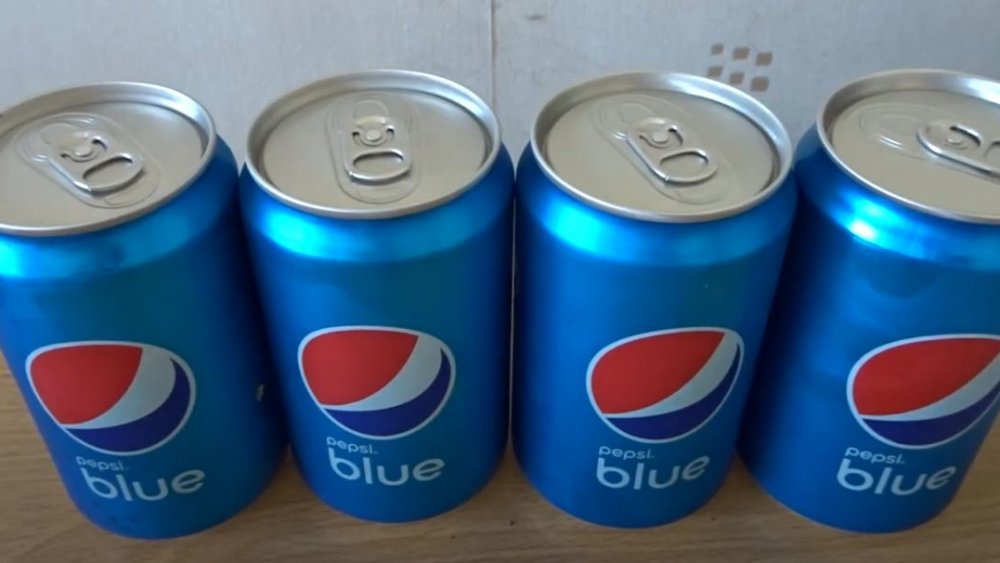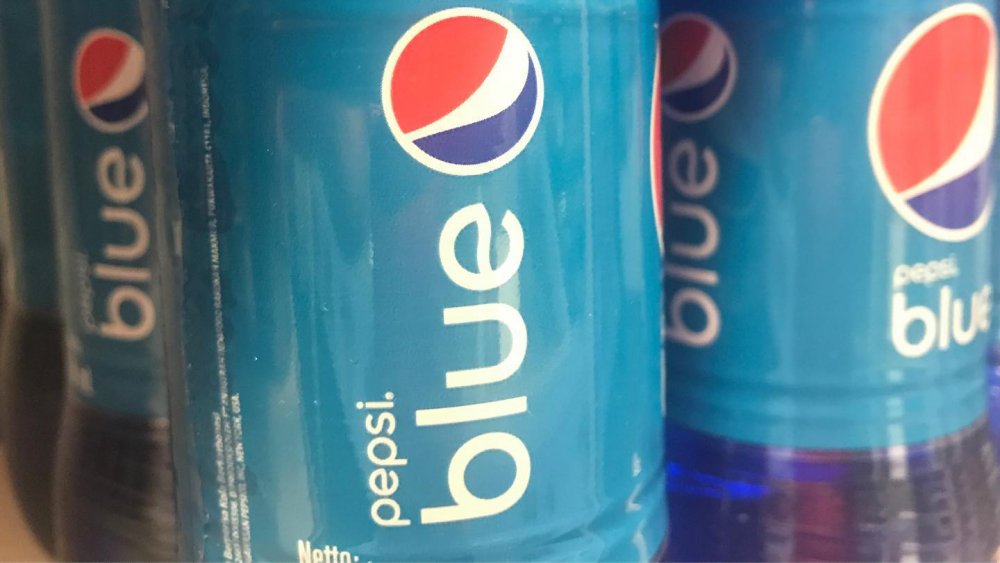The Facts Behind Pepsi Blue's Disappearance
Even the biggest brands in the food and beverage industry sometimes make missteps. Products that are hyped and have millions of dollars worth of advertising poured into them sometimes flop, only to eventually be removed from the market. It's just part of the game for food manufacturers and items that tank are built into their operating costs.
One such flop was Pepsi Blue, a fluorescent soda that looked more like antifreeze than a beverage (via So Yummy). The drink only lasted for a couple of years from 2002 to 2004; however, it's still available overseas in countries like Indonesia.
The beverage was introduced as a "berry cola fusion" that was meant to compete with Vanilla Coke (via Business Insider), although it's unclear why manufacturers believed Pepsi Blue, a soft drink way out in left field, was considered to a logical competitor to the fairly standard Vanilla Coke — other than the fact that it was introduced the day before Coke introduced its new flavor (via The Sydney Morning Herald). With the introduction of Pepsi Blue, the company was attempting to appeal to youngsters who had become bored with regular Pepsi, and apparently teens played a role in the development of the Windex-colored drink (via The Wall Street Journal).
The downfall of Pepsi blue
However, once the drink was released, Pepsi's use of a fake guerrilla marketing campaign left a bitter taste in the mouths of consumers. Undercover Pepsi employees posted on online forums in an attempt to get people interested in the new brand, and when people figured out what was going on, it resulted in a collective eye roll from consumers (via Reference).
Pepsi tried to drum up interest with a high-dollar marketing campaign as well (via That's). Britney Spears advertised the beverage, it was advertised for in a number of sporting leagues, and it made appearances in films like The Italian Job and Garfield: The Movie.
Part of the reason the berry cola may have been so unpopular is that it was made with the food coloring Blue No. 1, also known as "brilliant blue" (via Healthline) which has been banned in a number of countries due to health concerns. It was initially created from coal tar, although these days many manufactures use an oil base to make it (via Scientific American).

